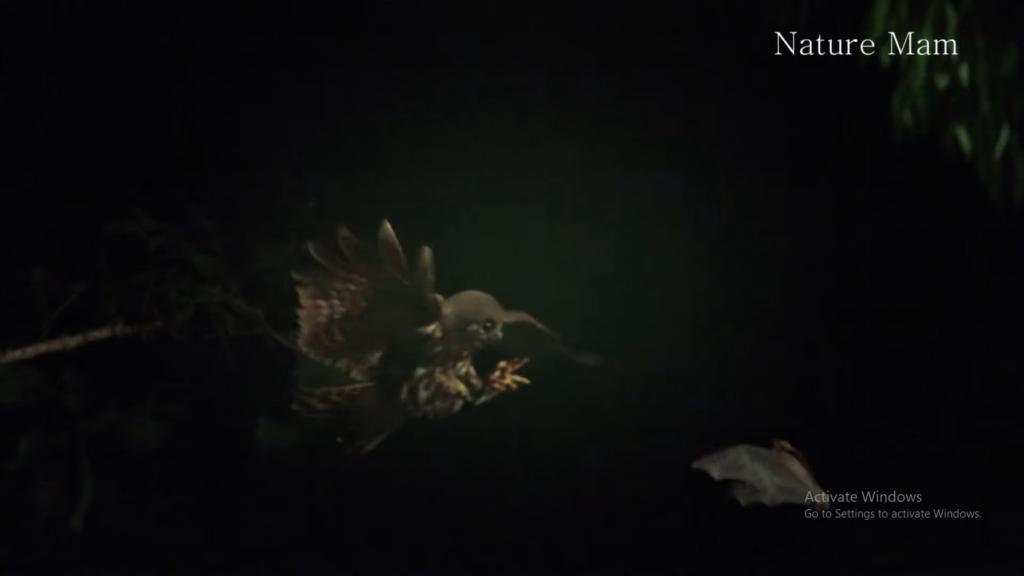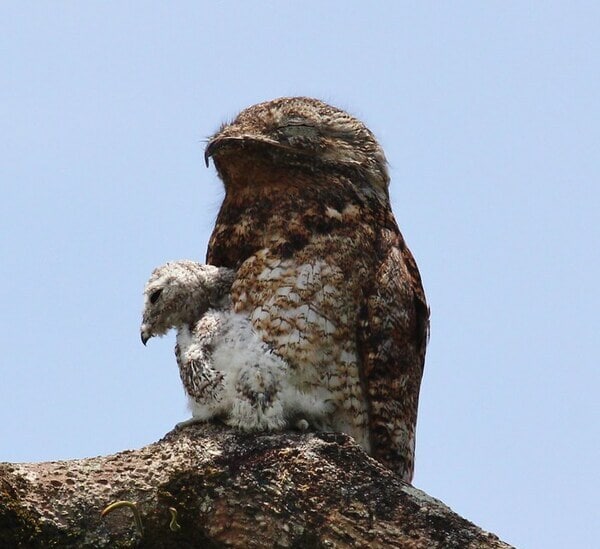Owls do eat bats, but not because bats are a preferred food source—rather, it happens when opportunity and timing align. Most owls survive on small mammals and birds, yet bats fall right into the size range that many species can handle. Their nocturnal schedules overlap, and in habitats where bats emerge in large numbers, an owl may take advantage of the moment.
In short, owls turn to bats when:
- bats are abundant around roost entrances,
- easier prey is temporarily limited,
- or when a slow, young, or careless bat makes itself vulnerable.
It’s not a targeted feeding strategy, just a natural part of being an opportunistic predator.
What Makes Certain Owls Effective Bat Hunters?
Some owls end up being better at catching bats simply because their natural abilities give them an edge. Silent wings, incredible hearing, and low-light vision make them specialists of the night long before a bat even realizes something is near.
These traits contribute to successful bat predation:
- near-silent flight that defeats echolocation,
- sensitive hearing that detects fluttering near roosts,
- strong talons that can secure a fast-moving target.
Species like the Great Horned Owl, Barn Owl, Tawny Owl, and Eagle Owl are repeatedly documented in studies because these traits are especially refined in them.


How Do Owls Catch Bats?
Catching a bat is nothing like catching a mouse. Bats are unpredictable in flight, capable of abrupt twists and rapid escapes. Yet owls still manage it by focusing on moments when bats are not flying at top speed.
Most encounters happen at roost sites where bats exit or return during twilight. At this stage, bats are slower, crowded, and easier to predict.
Some owls occasionally catch bats in mid-air, but that requires stealth and timing more than speed.
The most common approaches include:
- waiting at cave or hollow entrances,
- intercepting low or distracted bats,
- targeting weak or juvenile individuals.
Do Owls Regularly Hunt Bats?
Not at all. While owls are capable of hunting bats, they rarely depend on them. Rodents are far more rewarding and far easier to catch, so owls naturally focus on prey that offers the best energy return.
Bats appear in owl diets mostly when conditions influence availability—dense bat populations or temporary changes in usual prey abundance. Otherwise, bats remain an occasional meal rather than a primary food source.
Which Bat Species Do Owls Eat Most Often? (Based on Actual Diet Studies)
European pellet analysis studies give us the clearest data on this topic. Most bats eaten by owls are small species under 33 grams. Six species alone account for around 70% of all bat remains identified in owl diets.
Those commonly found include:
- Common Pipistrelle (P. pipistrellus)
- Greater Mouse-Eared Bat (M. myotis)
- Kuhl’s Pipistrelle (P. kuhlii)
- Parti-Coloured Bat (V. murinus)
- Noctule Bat (N. noctula)
- Serotine Bat (E. serotinus)
Larger bats rarely appear in owl diets—just 0.6% of recorded cases.
The heaviest species confirmed is the Egyptian Fruit Bat (R. aegyptiacus), taken only by very large owls such as the Eurasian Eagle-Owl.
Do Owls Threaten Bat Populations?
Despite these interactions, owls do not pose a meaningful threat to bat populations. Their predation levels are too low, and bats reproduce and cluster in large numbers that far exceed any impact from natural predators.
Both animals fill important ecological roles—owls control rodents and small birds, while bats manage insect populations, pollinate plants, and disperse seeds. Their predator-prey encounters are simply part of the natural balance rather than a population-level danger.
FAQs:
Do owls eat large bats like fruit bats?
Generally no, but large owls such as the Eurasian Eagle-Owl have been recorded eating the Egyptian Fruit Bat (around 135g). Larger bats are rare in owl diets.
Can bats detect owls with echolocation?
Sometimes. Echolocation can detect large objects or movement, but owls are extremely quiet flyers. When an owl approaches from behind or strikes near roost entrances, bats often cannot react quickly enough.
Should I worry about owls eating bats near my home?
No. Even if owls live nearby, they only take a few bats occasionally. Bat colonies remain unaffected, and the presence of both species is normal and ecologically healthy.
Do owls catch bats in mid-air?
Yes, but rarely. Owls can intercept bats in flight when approaching from above or behind, but this requires precision and timing. Most captures happen near roosting sites, not during high-speed aerial chases.
If You want to see how Owl Captures Bat
Owl couples hunt bats
Related Post
- How Much Can A Owl Carry – Read This Explanation
- Flammulated Owl : A to Z Guide
- Rufous Legged Owl : Everything You Need To Know
- Greater Sooty Owl : A to Z Guide
- Rufous Owl : A to Z Guide
- Do Owls Eat Birds : Let’s Understand Why
Resources
- intechopen.com
- opticsmag.com
- owlchatter.com

